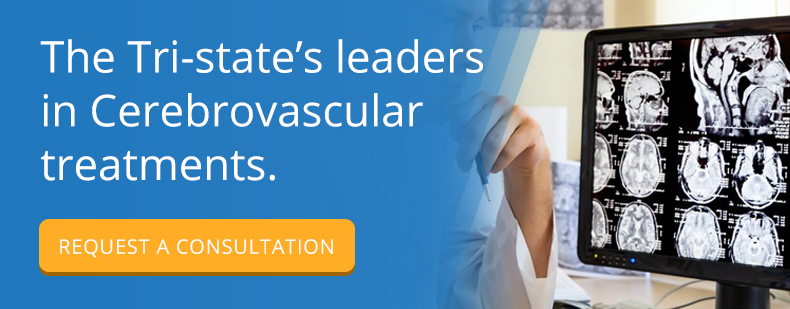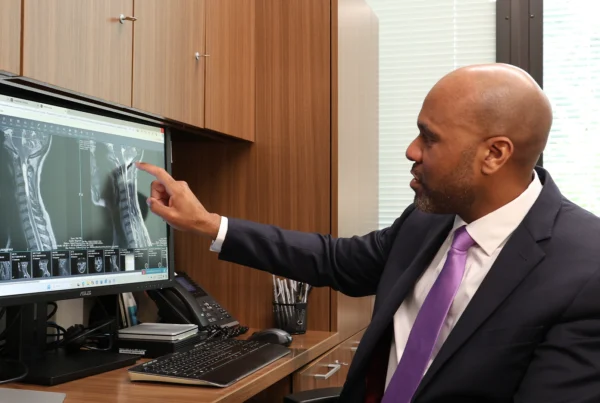Carotid artery disease is a leading cause of stroke. When plaque forms on the inner walls of one of the large carotid arteries in the neck, the artery can become narrowed or blocked altogether, depriving the brain of its blood supply. When a carotid artery has a blockage of 70 percent or more, doctors may recommend carotid endarterectomy surgery to remove the plaque and restore normal blood flow to the brain. Carotid endarterectomy surgery is not without risks, especially for those who have chronic health conditions such as diabetes, hypertension or other diseases. But for people who have severe blockage of the carotid arteries, this procedure may slash stroke risk by more than half.
Why Have Carotid Endarterectomy Surgery?
About 80 percent of all strokes are ischemic, caused by a blockage in the carotid arteries that interrupts blood flow to an area of the brain. These blockages arise from carotid artery disease caused by accumulations of plaque on the artery walls. Plaque is a waxy substance made up of cells, cholesterol deposits and fat that forms in response to inflammation in the arteries.
Plaque buildup can make the carotid arteries stiff and narrow. Plaque deposits can also crack and break, causing damage that leads to the development of blood clots. These clots and bits of plaque can also detach and migrate to smaller arteries in the brain, causing a stroke or transient ischemic attack (TIA) — a temporary episode of stroke symptoms that usually passes in about 24 hours.
Lifestyle factors such as smoking or a diet high in saturated and trans fats can contribute to the development of carotid artery disease. So can conditions such as hypertension and diabetes. Family history can also play a role.
For some people, managing these underlying conditions with medication and changing unhealthy habits can reduce plaque in the carotid arteries and keep them from becoming blocked. But when blockage is advanced, or if a stroke or transient ischemic attack (TIA) has already occurred, doctors may recommend a carotid endarterectomy — a surgical procedure that directly removes plaque deposits from artery walls to allow blood to flow freely to the brain.
What Happens During Surgery?
Carotid endarterectomy surgery takes around an hour in a hospital setting and typically requires general anesthesia. Surgeons make an incision in the neck to expose the affected carotid artery. The arteries in the neck are then identified, and prepared for the incision. The area of the artery where the plaque is located is then opened up. The plaque lining the affected artery wall is peeled away, so that normal blood flow can resume. The artery is reconnected and the incision stitched closed. When an artery is severely blocked, doctors may also create a patch, using either synthetic material or a graft from an artery elsewhere in the body.
After the surgery, patients usually recover in the hospital for one or two days, where they can be monitored for complications. At home, recuperation typically takes two to three weeks and, without complications, patients can gradually return to normal activity levels during that time. Post-op follow-ups include general progress checks and imaging tests such as carotid ultrasound to monitor healing and check for restenosis — a return of plaque.
Pros of Carotid Endarterectomy
Reduces Risk of Additional Stroke
Carotid endarterectomy surgery can reduce the risk of stroke by up to 80 percent in people at greatest risk. This includes people who have previously had at least one episode of stroke or TIA, and who have a severe blockage of the carotid artery (70 percent or more). For these patients, medication and lifestyle changes may not have been effective in reducing plaque accumulations in the arteries.
Reduces Risk of First Time Stroke
People who have not had a stroke or TIA can also see significant benefits from carotid endarterectomy surgery. For those who have never experienced stroke symptoms but who also have significant blockage (50 to 70 percent) in the carotid artery, surgery can reduce the risk of stroke by more than 50 percent, but so can medications, particularly newer medications designed to prevent neurovascular disease. It is important to consult with a neurosurgeon to determine what is the better option for you in this kind of a scenario.
Safe Procedure
When performed by experienced specialists, carotid endarterectomy is a generally safe procedure that results in serious post-op complications for about 2 to 3 percent of patients.
The Procedure Has Durable Outcomes
With proper follow-up care and attention to the lifestyle factors that contribute to the buildup of plaque, arteries cleared in a carotid endarterectomy can remain clear for years with no need for additional treatment. Patients can expect to have follow-up exams to check for any new accumulations of plaque.
Postoperative Lifestyle Changes
While a carotid endarterectomy procedure can clear existing plaque from a diseased artery, the plaque can return if the same conditions that caused it are still continuing. To prevent the development of new plaque, lifestyle and diet changes will need to be made. While these changes will deter plaque from returning, they will also benefit your overall health. Some positive lifestyle changes may include:
- Controlling high blood pressure
- Keeping cholesterol under control
- Exercising regularly
- Eating a healthy diet
- Losing excess weight
Cons of Carotid Endarterectomy
Complications Can Occur
Carotid endarterectomy surgery is not right for everyone, and like any surgery, this procedure poses risks. The most serious of these, although rare, is the possibility of postoperative stroke. Other risks include heart attack, breathing problems, and nerve damage that affects the tongue, vocal cords or saliva production. Your experienced surgical team will monitor you closely during the procedure to minimize any risks.
Surgery may not be appropriate for people who have serious underlying health conditions such as heart problems or diabetes, or who have serious disabilities from a previous stroke. Other factors such as age and overall health also play a role in determining whether someone is a candidate for carotid endarterectomy surgery. Your surgeon will assess all of these factors prior to determine if you are a good candidate for the procedure. There are other options too, such as carotid angioplasty and stenting.
Restenosis – When Plaque Returns
A carotid endarterectomy can clear existing plaque from the carotid artery. However, after surgery, plaque can redevelop if the conditions causing it are not addressed. For that reason, carotid endarterectomy patients are typically advised to take steps to manage any underlying health conditions that contribute to carotid artery disease. This includes taking medications as needed for hypertension and diabetes, two conditions that have a major impact on artery health, and making lifestyle changes such as quitting smoking, adopting a healthy diet and exercising.
Limited Benefits for Mild to Moderate Blockage
For patients with artery stenosis, or blockage, of less than 50 percent, with no stroke symptoms, carotid endarterectomy surgery offers little benefit compared to its risks. In those cases, doctors may recommend treating artery plaque with non-invasive options such as medications and diet and lifestyle changes.
Final Thoughts
Carotid endarterectomy surgery has been performed for nearly half a century to reduce blockage of the carotid artery and reduce the risk of stroke — an event that strikes about 795,000 Americans each year. For many people, this surgery can slash that risk and add healthy years. If you have carotid artery disease, your healthcare team can help you decide if carotid endarterectomy is appropriate for you.


About Neurosurgeons of NJ
Introducing our team of board certified physicians dedicated to bringing you the latest developments and treatment options. We strive to produce the most clarified & clear content to help you make informed decisions on your medical journey. The road to feeling like your true self should not feel lonely- Let us help you. Please call us to schedule a consultation and speak to one of your team members.
Please call today to schedule a consultation with us.
(551) 284-3265
Request a consultation with the Cerebrovascular Team






